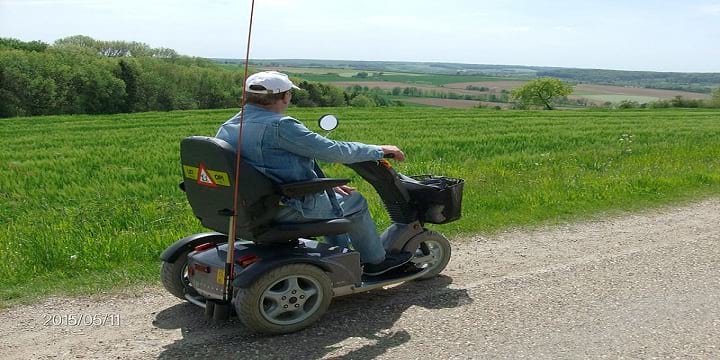One of the most common questions people ask about mobility scooters is whether or not they can: go on the road, uphill, and roll down a slope. The question, however, does not have a standard answer. Why? because mobility scooters differ and depend on the manufacturer’s specification.
Manufacturers test all mobility scooters and give information on road usability, slope, and gradient in the manuals. Getting this information is very important, especially when you live in a hilly area. Nonetheless, most mobility scooters can comfortably operate in hilly areas.
Related: Can Mobility Scooters go on the Road, Uphill, and Roll Down a Slope?
Although the size of the battery does not affect the ability of a mobility scooter to climb a steep hill. Managing steeper hills require more power from the motor, which drains the battery faster. It means larger batteries will be needed for a scooter to climb a hilly road efficiently.
Notably, it isn’t possible to accurately calculate maximum slope. As there are too many variations impacting the ability of a scooter to climb uphill, including the type of scooter and torque of a motor among other design-related factors.
Manufacturers testing process and real experience
In the testing of the mobility scooter’s capabilities before releasing to the market, manufacturers do it under perfect conditions. Including using a fully charged battery, properly serviced motor, cool and dry condition, and the right temperature.
However, in the real user experience, a scooter will encounter some of the most imperfect conditions that may require the user to be more careful when using the scooter. Sometimes, the scooter may achieve more than the manufacturer recommended. In terms of the steepness of a slope, but it’s not always recommended to go past the manufacturer’s recommendations.
Factors to consider before you go on the road, uphill or downhill
Being able to travel on the road, uphill, or downslope is dependent on whether your scooter can overcome gravity, friction, drag, and weight at a given angle of elevation. Therefore, consider the following factors before taking your scooter uphill or downslope:
- The steepness of the hill or road: when attempting to climb a road, consider the steepness to avoid rolling back. Some hills are too steep for even cars or motorbikes to climb.
- Power of your motor: your scooter’s power output will determine its ability to climb a steep hill. The power depends on the voltage and current being supplied from the motor.
- Weight: check on the combined weight of your scooter and your weight as the rider. The more the weight, the higher the resistance.
- Tires type and size: The size, type, and grip of your scooter’s tire will determine your ability to climb a steep hill or roll safely down a slope.
- Balance of your scooter: the suspension of your mobility scooter will influence its balance at a certain angle.
While most scooters will easily manage to work on the standard roads, go uphill and roll down a slope without any problem, there is a limit to the maximum limit of a steep slope a mobility scooter can manage, depending on the make and stability threshold provided by the manufacturer.





